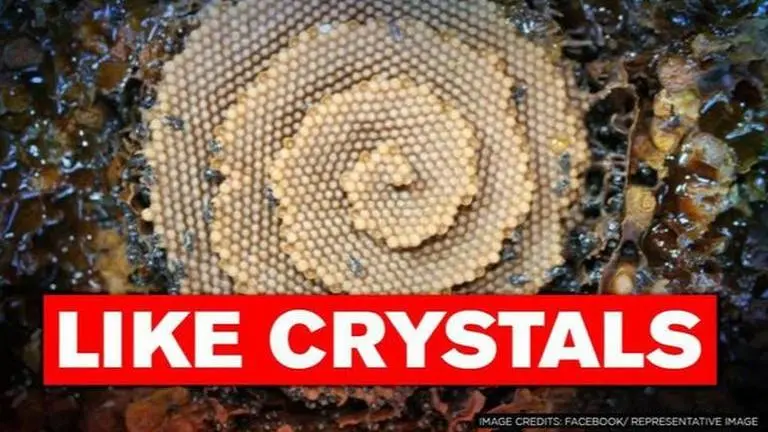Updated 24 July 2020 at 06:51 IST
Scientist discover artistic crystal-like structure in Tetragonula bees' spiraling hives
In breakthrough research, scientists have found that Tetragonula honeybees create artistic beehives that have complex spirals, bullseyes, terrace-shaped combs
- Entertainment News
- 2 min read

In breakthrough research, scientists have found that Tetragonula honeybees create artistic beehives that have complex spirals, bullseyes, terrace-shaped combs, and other amazing structures.
In a study published in the Journal of The Royal Society Interface, researchers detected unique beehives with abstract shapes that resemble the molecular 3D arrangement of crystals. The findings affirm that the honeybees adopted a “mathematical blueprint” that adhered to the laws of physics and constructed one of a kind hives like humans.
Speaking about the stunning bee hives that depict 3D target-like honeycomb structures, researchers wrote, “In Tetragonula nests, we find a variety of brood comb structures in three dimensions that can be classified into spirals, and target like the bullseye shaped patterns, double spirals and more disordered terraces.”
Advertisement
The researchers further added, “In a totally different field of science, crystals also grow in three-dimensional patterns with spirals and target patterns.” Explaining how these compact crystal-like structures evolved to gradually create a layered appearance, scientists said that bees created new cells to the edges of each terrace which they filled with an egg before closing the structure and keep repeating the process. The bees then use these layers, or terraces, to move around the colony.
"There is a beautiful mathematical equivalence between how molecules build a crystal and how bees build a bee comb", scientists wrote in Journal of the Royal Society Interface.
Advertisement
Resemble Human Designs
In another striking resemblance of beehives with humans’ rule of designing these structures, scientists found that both stingless beehives and crystals adhered to the so-called excitable medium.
In the study, researchers explained that in the construction of artforms as one layer was created and settled, the rest of the structure was easily erected further. This rule was common in both stingless beehives and some of the iconic molecular man-made structures.
Hives resemble multi-story car park
Researchers compared the terraces in the beehive to different levels in a man-made multi-story car park. They also found that the bees relied utmost on the distinct lattice arrangement while making their hives, which eventually created terraced and 3D structures.
“Both crystal growth and this bee comb construction are describable within the mathematical framework of excitable media,” researchers wrote. “Crystals, slime molds, the brain, the heart, chemical oscillators, forest fires, and many other systems can function as excitable structures,” they added.
(Images Credit: Journal of the Royal Society Interface)
Published By : Zaini Majeed
Published On: 24 July 2020 at 06:51 IST
